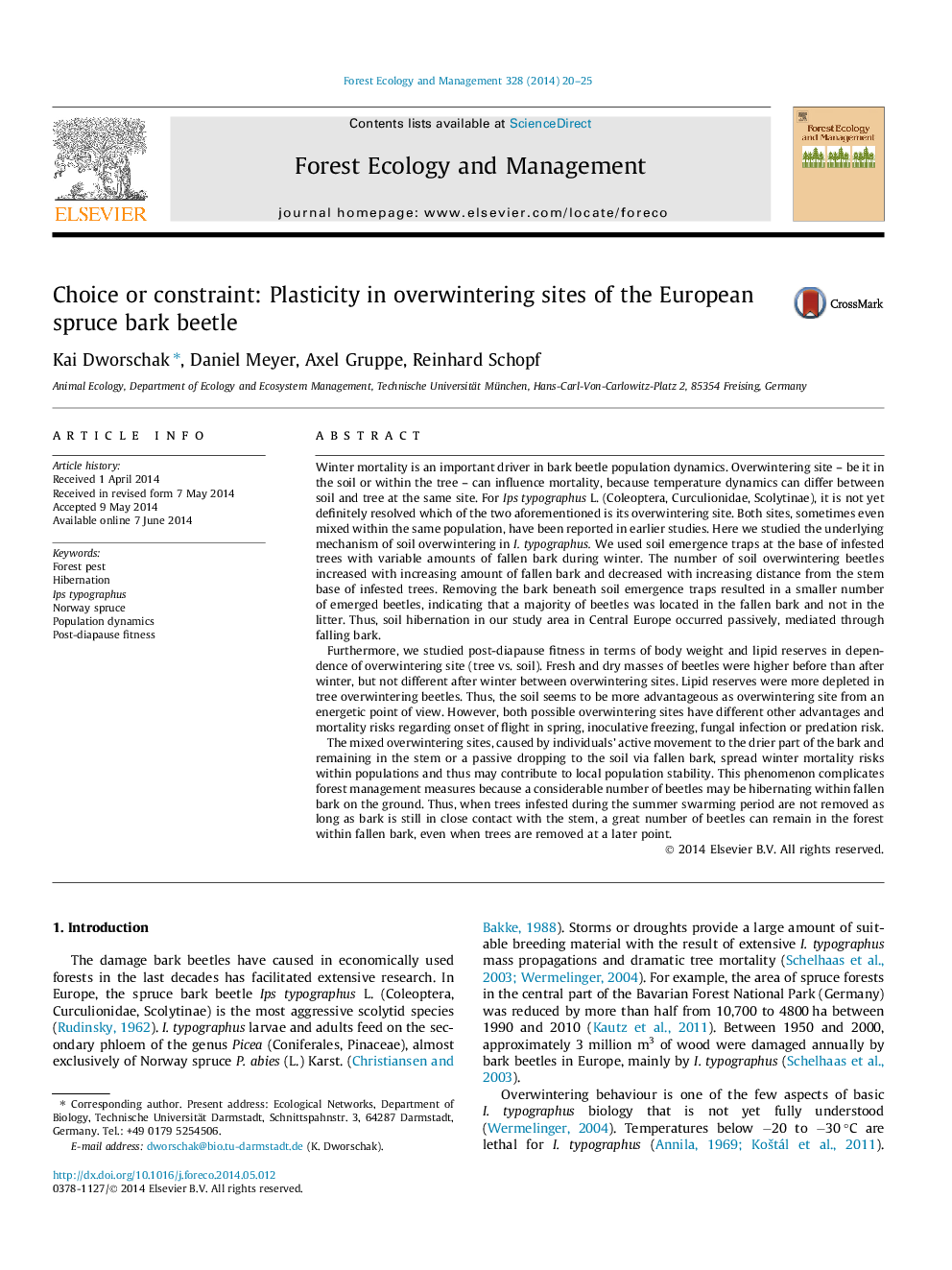| کد مقاله | کد نشریه | سال انتشار | مقاله انگلیسی | نسخه تمام متن |
|---|---|---|---|---|
| 86501 | 159194 | 2014 | 6 صفحه PDF | دانلود رایگان |
• We studied the underlying mechanism of soil overwintering in I. typographus.
• Soil hibernation occurred passively, caused by beetles falling down within bark.
• Depending falling bark, variable numbers of beetles overwinter in soil or tree.
• Mixed sites spread winter mortality risks and thus contribute to population stability.
• Trees have to be removed before winter, as long as bark has tight contact to the stem.
Winter mortality is an important driver in bark beetle population dynamics. Overwintering site – be it in the soil or within the tree – can influence mortality, because temperature dynamics can differ between soil and tree at the same site. For Ips typographus L. (Coleoptera, Curculionidae, Scolytinae), it is not yet definitely resolved which of the two aforementioned is its overwintering site. Both sites, sometimes even mixed within the same population, have been reported in earlier studies. Here we studied the underlying mechanism of soil overwintering in I. typographus. We used soil emergence traps at the base of infested trees with variable amounts of fallen bark during winter. The number of soil overwintering beetles increased with increasing amount of fallen bark and decreased with increasing distance from the stem base of infested trees. Removing the bark beneath soil emergence traps resulted in a smaller number of emerged beetles, indicating that a majority of beetles was located in the fallen bark and not in the litter. Thus, soil hibernation in our study area in Central Europe occurred passively, mediated through falling bark.Furthermore, we studied post-diapause fitness in terms of body weight and lipid reserves in dependence of overwintering site (tree vs. soil). Fresh and dry masses of beetles were higher before than after winter, but not different after winter between overwintering sites. Lipid reserves were more depleted in tree overwintering beetles. Thus, the soil seems to be more advantageous as overwintering site from an energetic point of view. However, both possible overwintering sites have different other advantages and mortality risks regarding onset of flight in spring, inoculative freezing, fungal infection or predation risk.The mixed overwintering sites, caused by individuals’ active movement to the drier part of the bark and remaining in the stem or a passive dropping to the soil via fallen bark, spread winter mortality risks within populations and thus may contribute to local population stability. This phenomenon complicates forest management measures because a considerable number of beetles may be hibernating within fallen bark on the ground. Thus, when trees infested during the summer swarming period are not removed as long as bark is still in close contact with the stem, a great number of beetles can remain in the forest within fallen bark, even when trees are removed at a later point.
Journal: Forest Ecology and Management - Volume 328, 15 September 2014, Pages 20–25
